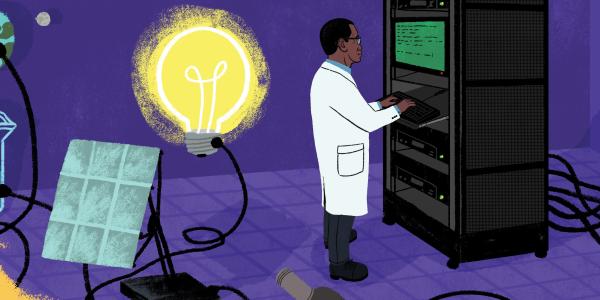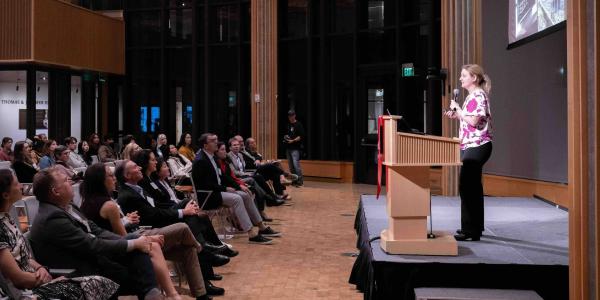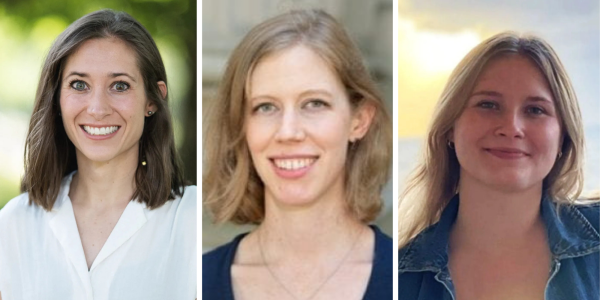Wexler, an assistant professor of chemistry, uses computational power to see new possibilities for green energy.
Not all chemists work with pipettes and bubbling flasks. Robert Wexler, an assistant professor of chemistry, uses the principles of quantum physics and high-powered computing to predict and design new materials that could help fuel a revolution in green energy.

Through digital chemistry, Wexler can tinker with compounds and discover new combinations without ever entering a lab. “Running simulations of different materials isn’t just useful for discovery,” he said. “It’s really helpful for understanding how a material works at the atomic level.”
Wexler, previously a postdoctoral researcher at Princeton University, came to WashU in 2022 under Arts & Sciences’ digital transformation initiative. “I was excited to join a university where so many researchers were taking a computational approach in their various fields,” he said. “I knew I would fit right in.”
Naturally, some of those like-minded researchers have become collaborators. Wexler is working with Robert Lunde, an assistant professor of statistics and data science, to better understand the statistical uncertainties that come with building theoretical compounds on a computer.
Wexler’s work may be digital, but it has profound real-world implications. He’s focused on finding materials that can help break the chemical bonds in water in order to produce hydrogen gas, a promising alternative to fossil fuels. Hydrogen is also an important ingredient in industrial chemicals and pharmaceuticals.
In 2023, the U.S. Department of Energy awarded a $1.25 million grant to Wexler and collaborators across the country for a project to develop new materials that could produce hydrogen fuel from water using solar heat. After Wexler developed the virtual material — a variation of the perovskite crystals often used in solar panels — he worked with an outside team of chemists and chemical engineers, who turned the theoretical substance into reality. Experiments showed that this material and other variations were just as impressive as their digital versions. “The properties beautifully matched our predictions,” he said.
“It’s exciting to make cool materials, but it’s even more exciting to know exactly why the materials behave the way they do,” Wexler said. “Modern computing power has opened up a new world of opportunities for chemists to understand and control the behavior of matter, atom by atom.”
This story is a part of a larger feature about WashU’s digital transformation initiative, which appeared in the Spring 2025 issue of Ampersand magazine. See more stories from the magazine and browse our archives.





